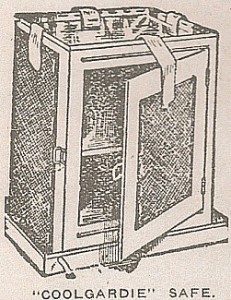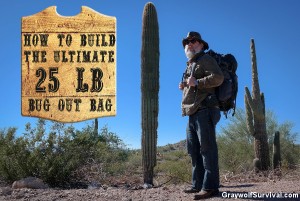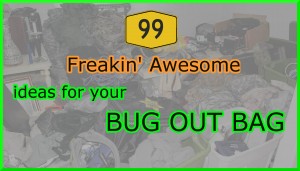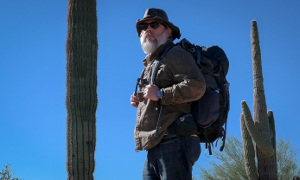
What is a Zeer pot and how do you make one?
You don’t need electricity to cool food or medicine with a zeer pot. I’m gonna go over the basics of what zeer pots are and how they work so you can make one yourself. We’ll also go over how to do the same thing without pots.
A zeer pot is a container made of materials that are specially chosen to take advantage of evaporative cooling. Remember the swamp cooler project I told you about? This works on the same principle except it pumps water and blows the air into a room like most swamp coolers do. You won’t be able to freeze anything with it but it’ll extend the life of whatever you’re trying to keep fresh inside.
How does an evaporative cooler work?
In order for water to evaporate from a liquid to water vapor, it needs energy. It gets that energy from the area immediately surrounding it. That’s how sweat works (eww). Your body perspires onto your skin and your body heat or the heat from the air (or sun) then provides energy to the drops. Since it’s touching your skin as it evaporates, it pulls in some heat energy from your skin as it disappears. Less heat means more cool.
Just like the swamp cooler (evaporative cooler), the drier the are is around the pot, the better it works. The amount of water vapor in the air is called relative humidity. Basically, just like a towel, the air at a certain temperature and pressure can only hold so much water in it. If it’s already full, it won’t be able to take any more. If its dry, it takes it more easily.
A zeer pot works exactly the same way.
How to make a Zeer pot
A zeer pot is actually two pots, one inside the other. The outside pot is made of a porous earthenware (clay) pot. The inside is made of the same thing but can be glazed on the inside to keep the humidity from the inside, where the food goes. Wet sand is packed between the two pots and a wet towel or clay lid is placed on the top of the center pot.

So how it works is really simple. Because the sand is wet and the clay pot is porous, the water soaks into the pots. The outside of the pot (and wet towel at the top) is in contact with dry air and so it evaporates. As it evaporates, it pulls more water from the sand as well as heat energy. The water in the outside pot starts to cool down, which then cools down the wet sand. The inside pot also cools off because it’s soaked with water. A cool pot means cool food. If you really want to get technical on how it works and how to build one, Appropedia has a good article.
Zeer pot video
I know some of you’d rather watch a movie than read a book, so here’s a video:
The inside temperature will depend on the outside temperature. If you do it right, you can expect to keep your food about 20 degrees cooler this way.
The system works fairly efficiently through wet material but air is an insulator. If you have to keep the inside of the pot dry, it will cool but not as well. In this case, you’d want to glaze the inside of the inner pot.
Ways to increase the efficiency of a Zeer pot
Things like airflow, relative humidity, the materials used and surface area affect how well the system works so playing around with those things can make them more efficient – or less.
For example, you may think that putting the pot in a cool basement would be better because the outside temperature would be less, making the inside temperature less. The problem is that if the basement is damp, its relative humidity is going to be high so the water won’t evaporate very well. Burying the pot in damp earth would be even worse.
To work even more efficiently, the inside pot could be unglazed and filled with wet sand or even water. This means whatever you’re cooling will be sitting in wet sand but you may be able to wrap it in some kind of plastic to keep it dry (which will insulate it somewhat on its own but not as much, depending on how you’re doing it.
To increase the zeer pot’s effectiveness, put the whole thing on a metal rack or hang it from above. This will expose the bottom of the pot to the air and help airflow around it.
You might think that putting it in the sun would make it more efficient. This isn’t likely to be the case. It isn’t just the evaporation that’s cooling your water, it’s the evaporation coming from the heat of the water. If you heat up the pot by 10 degreees from the sun and it takes 10 degrees from the water to evaporate the exposed areas, you haven’t cooled off the inner pot. A certain amount of sun can make it more effective though.
This particular project is a great one for experimenting. If you want to get ideas from what other people have done, search google for what people have done in 3rd World nations such as Nigeria, Sudan or India. There are many NGO’s (non-governmental agencies) that test and experiment with things like Zeer pots.
The Coolgardie Safe
The nice thing is that the parts are super cheap to make a simple evaporative cooler and can even be made from raw materials found in most areas. If you don’t have the materials mentioned above, there are several other ways you can put one together. Just follow the science behind it that I’ve mentioned as to how it works and you can use what you have available. A Coolgardie safe an example:
The Coolgardie safe works on pretty much the same principle as a Zeer pot but uses entirely different parts. Sometimes really simple parts.
A Coolgardie safe is essentially just a swamp cooler that cools off what’s inside it instead of being used to blow through to cool off a room. Same thing though because the inside of a swamp cooler is cool too.

Here are two quick videos that explain how to make your own Coolgardie Fridge (safe – whatever):
So to sum it up, to make yourself a zeer pot, you just need a couple of porous containers and some wet sand. To make that idea useful, you can use whatever you have available even if you don’t have any porous pots. Just remember that you need the water to evaporate and that evaporation is affected by things like airflow. Oh, and don’t forget that you need to keep the system wet in order for it to work or there’ll be nothing to evaporate.
Simple!










Those 2 videos are pretty cool. I haven’t seen them before.
Peace,
Todd
I know that so called swamp coolers will not work in high humidity like coastal areas. I do not think this will work. It would be great for low humid and desert places. Let me know if I am Wrong.
Mark
The chart in this article will give you an idea of how effective they are at different humidities: http://graywolfsurvival.com/2365/how-to-make-a-5-gallon-bucket-air-conditioner/
anyway we could convince Mr Greywolf to run for president? his ideas make a hell of alot more sense than anything coming out of the current contender’s mouths.